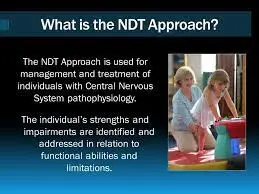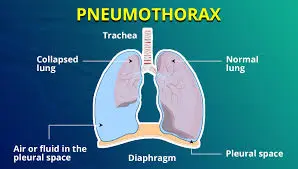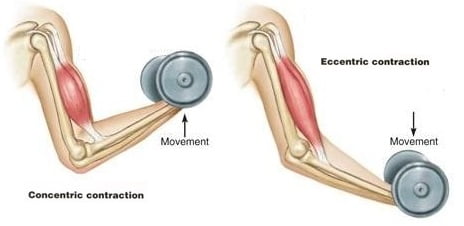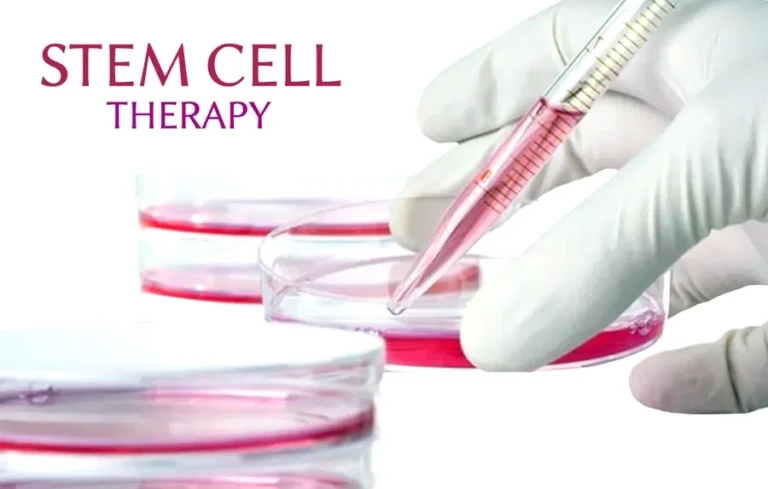Bobath’s Approach
What is a Bobath’s Approach?
Bobath’s approach is a neurological rehabilitation technique that is used with patients who have experienced a stroke (adults or children with cerebral palsy). Applying the Bobath idea aims to improve function and involvement by improving motor learning for effective motor control in various contexts.
This is accomplished by using specialized patient-handling techniques to assist patients in starting and finishing planned tasks. This interdisciplinary approach to neurological rehabilitation is mostly carried out by speech and language therapists, occupational therapists, and physiotherapists. Within the United States, “neuro-developmental treatment” (NDT) is another name for the Bobath Approach.
The idea, along with its global tutors and instructors, has incorporated neuroscience and the advancements in our knowledge of neuroplasticity, motor learning, motor control, and human movement research. They think this strategy is still evolving.
The Bobath idea bears the names of its creators, physiotherapist Berta Bobath and neuropsychiatrist/neurophysiologist Karel Bobath. Their study mostly involved stroke and cerebral palsy patients. The primary issues with these patient groups were the lack of regular movements and the normal postural reflex system.
From its conception, the Bobath idea was centered around recovering normal motions through re-education. It has since changed to take into account fresh knowledge on neuroplasticity, motor learning, and motor control. Instead of striving for “normal” movement patterns in the end, therapists who practice the Bobath concept nowadays accept the objective of producing accurate movement patterns with the use of orthotics and suitable compensations.
When evaluating and treating patients who have abnormalities in their movement and postural control as a result of a central nervous system injury, the Bobath concept is a problem-solving methodology that is applied. The treatment strategy for individuals with Central Nervous System abnormalities is named after Berta Bobath, a physiotherapist, and her husband Karl, a psychiatrist/neuropsychiatrist, who devised it.
They created this method to effectively treat the neuro-motor dysfunctions that children with cerebral palsy (CP) exhibit. In the past, surgery, braces, and passive stretching were the most often used procedures. A fresh perspective on children with cerebral palsy (CP) was offered by the Bobath idea, which saw these kids as struggling with postural control and defying gravity.
To aid in the growth of the Bobath Concept, a group of seasoned Bobath teachers founded an international association in 1983. It is currently called the International Bobath Instructor Training Association (IBITA), having changed names in 1996.
Bobath’s Approach guiding principles
Bobath is predicated on the brain’s capacity for change, reorganization, and recovery following neurological injury.
- The Bobath method is based on several ideas, such as:
- promotion of regular gait patterns
- concentrating on the movement’s quality
- Tone normalization to promote active mobility
- Posture and laying, sitting, and standing positions
- Disincentives for compensating motions
- discouragement of exercising for muscular strength……
- Encouragement of full functional recovery to enhance independent quality
- To prevent overexertion and to give sensory input, handling techniques are utilized.
Advantages of Bobath’s Approach
Physical therapists in Bobath help people move as normally and energy-efficiently as possible while preventing aberrant movement patterns by:
- Return to normal tone
- Regain your ability to move.
- Make precise, goal-directed motions simpler to accomplish.
- Boost your posture
- Stretch tense muscles to help lessen contractures and stiffness
- Boost proficiency in daily tasks
- Boost self-reliance
- Reach your full potential.
- To encourage healing, the Bobath method also stresses the significance of early rehabilitation, consistent practice, and a stimulating environment.
Clinical Application of the Bobath Concept
Motor Control
Bobath’s Concept addresses the motor issue that affects the patient as a whole as well as sensory, perceptual, and adaptive behavior. It is a task-specific, goal-oriented technique that seeks to arrange the nervous system’s internal (proprioceptive) and exterior (exteroceptive) environments for optimal individual performance. Patients and therapists engage in interactive treatment.
The following is the focus of therapy:
- Motor function is influenced by the spinal cord, higher centers, and neuro-muscular system.
- Neuroplasticity, an adaptable neural system, and unique movement expression.
- overcoming post-UMN lesion weakening of cerebral drive by selectively activating cutaneous and muscular receptors.
- The fundamentals of motor learning—meaningful objectives, practice opportunities, and active participation—should be understood by therapists. The Bobath idea requires training not just in the treatment department but also in many real-life scenarios. Considering the perceptual and cognitive demands, task-specific muscle activation patterns and sensory input allow the activity to be completed in various circumstances and environments.
Treatment focuses on indifferent, stereotyped movement patterns that obstruct functional ability. Its goals are to enhance residual function and stop spasticity from developing. Therapists can modify muscle length and range to affect hypertonia on a non-neural level.
Tone is worked on by therapists to enhance mobility, not to normalize tone. One way to lessen tone is:
- mobilization of the tight joints and muscles.
- Flex your muscles.
- the application of more typical movement techniques.
- via carrying out functional duties with less effort and better efficiency.
- Bearing weight.
Sensory Systems
The fundamental idea of the Bobath method is the role that sensory inputs play in both motor learning and shaping motor output. Individuals who experience partial or total sensory loss move with irregularity and lack of coordination.
Deafferented individuals have dysmetria and inaccurate movements, even in the presence of visual input. They lack cutaneous feeling and proprioception and have a considerable fiber sensory land. The nervous system cannot identify the origin point, or referent location, of the spatial frame of reference for motoneurons to recruit when proprioceptive information is absent or changed as a result of an injury or illness. This leads to an aberrant movement.
Bobath therapists frequently use sensory cues such as the following to modify movement:
- Tactile data got from hands.
- removing the need for physical assistance once patients are ready to move independently.
- For instance, it’s thought that a therapist can nonverbally urge a patient to move a limb precisely by placing their hands in the right positions. It is commonly recognized that sensory impulses from the skin and other organs can affect motor output.
Electrical stimulation eliciting cutaneous afferent input can modify lower limb H reflexes. The therapist’s hands can give cutaneous information that can similarly alter muscle activation as electrical stimulation or exteroceptive mechanical vibration can alter spatial motoneuronal thresholds.
Skeletal system
The Bobath method deals with issues that arise from the growing central nervous system‘s dysfunction, which impacts a person’s social, emotional, cognitive, perceptual, sensory-motor, and perceptual abilities development.
- It is not a method, but rather an idea or approach.
- It acknowledges the possibility for improved function in all individuals with neuro disabilities.
- It acknowledges that a detailed examination of every patient’s functional abilities is necessary.
- It is supported by evidence that is currently known.
- It is a crucial strategy for individuals who have suffered neurological damage during their recovery.
- The term ‘neuro-developmental therapy’ (NDT) is commonly used to refer to the Bobath idea in the US.
- It is predicated on neuroplasticity, the brain’s capacity to restructure and reorganize.
- Speech and language therapists, occupational therapists, and physical therapists are all involved in this associative approach.
- People with CNS pathophysiology have abnormalities in their movement and posture, which leads to limits in their functional activities.
Bobath Concept Video
Living Concept
- With the advent of new models, ideas, and data in the movement sciences, the NDT/Bobath method keeps becoming better. Although the idea of NDT has evolved, some elements have not changed.
- Things that don’t change are:
- It is a strategy for evaluation and problem-solving.
- Tone has a direct impact on how well functional activities are performed and is vital for postural control and movement patterns.
- The primary strategy for improving functional and postural task performance is handling.
- During therapy sessions, patients are urged to fully engage.
- Functional training is essential for milestone development.
- Changes that have occurred:
- Tone can influence both neural and non-neuronal components.
Spasticity is rarely the main factor behind a patient’s mobility issues. Furthermore, the plan is always changing as the characteristics of the population with CNS dysfunction change.
Rehabilitation following a stroke
According to the Bobath Concept, patients start building their abilities on postural control.
Patients receiving this kind of treatment usually start with easier postures and motions and work up to more challenging ones. When requested to do certain motions or postures, therapists examine them for any anomalies that could exist. Compulsory synergy patterns are one type of prevalent aberrant movement pattern.
These patterns may be explained as an attempt to conduct isolated movement of a certain limb, however, to move, additional muscles that are normally not engaged in movement are used. For both the upper and lower extremities, flexion and extension synergy components may be further separated into obligatory synergy patterns. Both the patient and the therapist must actively participate in this technique.
Rehabilitation objectives may aim to address any or all of the following, depending on the patient: aberrant tone, muscular weakness, ideal body alignment, coordination of movement sequences, postural control, and movement initiation. As a result, both positive and negative symptoms—such as reduced postural control and spasticity—will be addressed throughout treatment.
The methods and approaches applied in Bobath treatment include therapeutic handling, key control point activation, and facilitation. The application of combined facilitation and inhibitory techniques on movement quality is known as therapeutic handling. A key component of Bobath treatment is facilitation, which promotes motor learning by using verbal cues and tactile touch as well as other sensory signals to encourage excessive movement patterns and reinforce weak ones.
Timing, modality, intensity, and withdrawal are all important factors to take into account when precisely applying facilitation during motor tasks, and they all affect how well motor learning proceeds. Reducing irregular movement or postural components that impede regular functioning is the definition of inhibition. Important control points are frequently the parts of the body that are best for promoting or preventing a certain movement or posture.
An individual who has experienced a stroke may be administered activities by a physical therapist or occupational therapist. These activities are chosen based on their functional significance and vary in difficulty and setting. Compensatory training tactics, which refer to using the person’s less involved parts, are avoided. One major reason for the transfer of functional activities within the home and community context is the education of patients, families, and carers.
FAQs
What is the Bobath approach?
The Bobath method focuses on issues that arise from deficiencies in the growing central nervous system, which impact a person’s social, emotional, cognitive, perceptual, sensory-motor, and cognitive development. It is not a method, but rather an idea or approach.
What are the techniques of handling in Bobath?
The following are some of the guiding ideas of the Bobath approach: Supporting regular movement patterns.
Concentrating on the movement’s quality.
Normalization of tone to promote active movement.
Posture and placement when sitting, standing, and lying down.
Movement compensation is discouraged.
What is the key point of control in Bobath?
Key Point of Regulation: The therapist’s selection of the best body areas to regulate (inhibit or assist) movement and postures is known as a key point. Shoulders and pelvis are examples of proximal important points that impact proximal segments and the trunk.
What are the assumptions of the Bobath approach?
The main tenets of contemporary practice are outlined here: a systems view of motor control; neuroplasticity formed by afferent input modulation; and neurophysiological dysfunction as the principal cause of dysfunctional movement.
What is the difference between NDT and Bobath?
The Bobath approach, also known as neurodevelopmental therapy (NDT), is a widely recognized idea for the rehabilitation of stroke patients with hemiplegia in several countries.
References
- Bobath Approach. Physiopedia. https://www.physio-pedia.com/Bobath_Approach
- Bobath – Neurological Rehabilitation – Treatments – Physio.co.uk. https://www.physio.co.uk/treatments/neurological-rehabilitation/bobath.php
- Bobath concept. Wikipedia. https://en.wikipedia.org/wiki/Bobath_concept







3 Comments